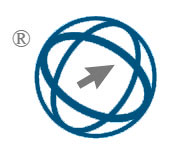Logistic Sigmoidal and Neural Network Modeling for COVID-19 Death Waves
Abstract
Full Text:
PDFReferences
S. Kumar, “Monitoring Novel Corona Virus (COVID-19) Infections in India by Cluster Analysis,” Annals of Data Science, vol. 7, no. 3, pp. 417–425, sep 2020. [Online]. Available: https://doi.org/10.1007/s40745-020-00289-7
M. A. Alsalem, A. H. Alamoodi, O. S. Albahri, K. A. Dawood, R. T. Mohammed, A. Alnoor, A. A. Zaidan, A. S. Albahri, B. B. Zaidan, F. M. Jumaah, and J. R. Al-Obaidi, “Multicriteria decision-making for coronavirus disease 2019 applications: a theoretical analysis review,” Artificial Intelligence Review, vol. 55, no. 6, pp. 4979–5062, aug 2022. [Online]. Available: https://doi.org/10.1007/s10462-021-10124-x
N. Pearce, D. A. Lawlor, and E. B. Brickley, “Comparisons between countries are essential for the control of COVID19,” International Journal of Epidemiology, vol. 49, no. 4, pp. 1059–1062, jun 2020, eprint: https://academic.oup.com/ije/articlepdf/49/4/1059/34275473/dyaa108.pdf. [Online]. Available: https://doi.org/10.1093/ije/dyaa108
O. A. Vilca-Huayta and U. Y. Tito, “Efficient function integration and a case study with gompertz functions for covid-19 waves,” International Journal of Advanced Computer Science and Applications, vol. 13, no. 8, 2022. [Online]. Available: http://dx.doi.org/10.14569/IJACSA.2022.0130863
O. A. Vilca Huayta, A. C. Jimenez Chura, C. B. Sosa Maydana, and A. J. Mart´ınez Garc´ıa, “Analysis of the epidemic curve of the waves of covid-19 using integration of functions and neural networks in peru,” Informatics, vol. 11, no. 2, 2024. [Online]. Available: https://www. mdpi.com/2227-9709/11/2/40
V. Janko, G. Slapniˇcar, E. Dovgan, N. Reˇsˇciˇc, T. Kolenik, M. Gjoreski, M. Smerkol, M. Gams, and M. Luˇstrek, “Machine learning for analyzing non-countermeasure factors affecting early spread of covid-19,” International Journal of Environmental Research and Public Health, vol. 18, no. 13, 2021. [Online]. Available: https://www.mdpi.com/1660-4601/18/13/6750
Z. A. Oraibi and S. Albasri, “Efficient COVID-19 Prediction by Merging Various Deep Learning Architectures,” Informatica, vol. 48, no. 5, Feb. 2024, number: 5. [Online]. Available: https://www.informatica.si/ index.php/informatica/article/view/5424
S. Abolmaali and S. Shirzaei, “A comparative study of SIR Model, Linear Regression, Logistic Function and ARIMA Model for forecasting COVID-19 cases,” AIMS Public Health, vol. 8, no. 4, pp. 598–613, aug 2021. [Online]. Available: https://www.ncbi.nlm.nih.gov/pmc/ articles/PMC8568588/
R. A. Conde-Guti´errez, D. Colorado, and S. L. Hern´andez-Bautista, “Comparison of an artificial neural network and Gompertz model for predicting the dynamics of deaths from COVID-19 in M´exico,” Nonlinear Dynamics, vol. 104, no. 4, pp. 4655–4669, Jun. 2021. [Online]. Available: https://doi.org/10.1007/ s11071-021-06471-7
A. El Aferni, M. Guettari, and A. Hamdouni, “COVID-19 multiwaves as multiphase percolation: a general N-sigmoidal equation to model the spread,” The European Physical Journal Plus, vol. 138, no. 5, p. 393, May 2023. [Online]. Available: https: //doi.org/10.1140/epjp/s13360-023-04014-0
R. Sujath, J. M. Chatterjee, and A. E. Hassanien, “A machine learning forecasting model for COVID-19 pandemic in India,” Stochastic Environmental Research and Risk Assessment, vol. 34, no. 7, pp. 959–972, 2020. [Online]. Available: https://doi.org/10.1007/ s00477-020-01827-8
S. Shastri, K. Singh, S. Kumar, P. Kour, and V. Mansotra, “Time series forecasting of covid-19 using deep learning models: India USA comparative case study,” Chaos, Solitons and Fractals, vol. 140, p. 110227, 2020.
[Online]. Available: https://www.sciencedirect. com/science/article/pii/S0960077920306238
F. Fernandes, S. F. Stefenon, L. O. Seman, A. Nied, F. C. S. Ferreira, M. C. M. Subtil, A. C. R. Klaar, and V. R. Q. Leithardt, “Long short-term memory stacking model to predict the number of cases and deaths caused by COVID-19,” Journal of Intelligent & Fuzzy Systems, vol. 42, no. 6, pp. 6221–6234, 2022, publisher: IOS Press.
S. Namasudra, S. Dhamodharavadhani, and R. Rathipriya, “Nonlinear Neural Network Based Forecasting Model for Predicting COVID-19 Cases,” Neural Processing Letters, vol. 55, no. 1, pp. 171–191, 2023.
F. Ozen, “Random forest regression for prediction¨ of Covid-19 daily cases and deaths in Turkey,” Heliyon, vol. 10, no. 4, p. e25746, 2 2024, publisher: Elsevier. [Online]. Available: https: //doi.org/10.1016/j.heliyon.2024.e25746
S. Kanchan, E. Ogden, M. Kesheri, A. Skinner, E. Miliken, D. Lyman, J. Armstrong, L. Sciglitano, and G. Hampikian, “COVID-19 hospitalizations and deaths predicted by SARS-CoV-2 levels in Boise, Idaho wastewater,” Science of The Total Environment, vol. 907, p. 167742, Jan. 2024. [Online]. Available: https://www.sciencedirect. com/science/article/pii/S0048969723063696
J. H. University, “Github - cssegisanddata/covid19: Novel coronavirus (covid-19) cases, provided by jhu csse.” [Online]. Available: https://github. com/CSSEGISandData/COVID-19
M. Haouari and M. Mhiri, “A particle swarm optimization approach for predicting the number of COVID-19 deaths,” Scientific Reports, vol. 11, no. 1, p. 16587, Aug. 2021. [Online]. Available: https://www.nature.com/articles/s41598-021-96057-5
M. Vikov´a and M. Vik, “Transition Temperature of Color Change in Thermochromic Systems and Its Description Using Sigmoidal Models,” Materials, vol. 16, no. 23, p. 7478, Jan 2023, number: 23 Publisher: Multidisciplinary Digital Publishing Institute. [Online]. Available: https://www.mdpi.com/1996-1944/16/23/7478
S. F. Ardabili, A. Mosavi, P. Ghamisi, F. Ferdinand, A. R. Varkonyi-Koczy, U. Reuter, T. Rabczuk, and P. M. Atkinson, “Covid-19 outbreak prediction with machine learning,” Algorithms, vol. 13, no. 10, 2020. [Online]. Available: https://www.mdpi.com/1999-4893/13/10/249
O.-A. Vilca and M.-C. Rivara, “Study on the Average Size of the Longest-Edge Propagation Path for Triangulations,” Feb. 2025, pp. 368–375.
[Online]. Available: https://www.scitepress.org/ Link.aspx?doi=10.5220/0009162703680375
G. Gu, P. Zhang, S. Chen, Y. Zhang, and H. Yang, “Inflection point: a perspective on photonic nanojets,” Photonics Research, vol. 9, no. 7, pp. 1157–1171, July 2021, publisher: Optica Publishing Group. [Online]. Available: https://opg.optica.org/prj/abstract.cfm?uri=prj-9-7-1157
Y. A. Hong and J. W. Ha, “Enhanced refractive index sensitivity of localized surface plasmon resonance inflection points in single hollow gold nanospheres with inner cavity,” Scientific Reports, vol. 12, no. 1, p. 6983, Apr 2022, number: 1 Publisher: Nature Publishing Group. [Online]. Available: https://www.nature.com/articles/s41598-022-11197-6
I. Bronshtein, K. Semendyayev, G. Musiol, and H. Mu¨hlig, Handbook of Mathematics. Berlin, Heidelberg: Springer, 2015. [Online]. Available: https://link.springer.com/10. 1007/978-3-662-46221-8
DOI: https://doi.org/10.31449/inf.v49i19.7476

This work is licensed under a Creative Commons Attribution 3.0 License.









